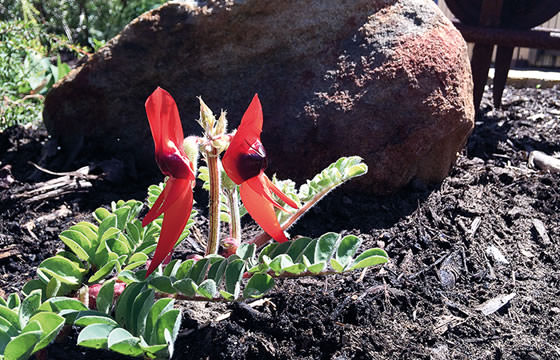 For Aboriginal people, the image of God (Creator of all things) has been given to them in every aspect of creation on the land and in the heavens. They would sit around the fire and speak of all the things that they saw around them; that was the place where everything in life was discussed. Although they had no specific hierarchical system, there were always special elders to guide them and keep their culture evolving. Culture was not static; as changes occurred, they adapted. This is so because nothing in this wonderful world is as certain as change. Elders often discerned from early childhood if a child had special attributes that could be considered special, and developed that child toward the role of an elder. First by the women and then passed onto the men at puberty. Men could be in their 30s before being considered responsible as an elder. It was an egalitarian culture. Storytelling was their mode of passing on the knowledge they'd acquired, as various generations discovered new things. Aboriginal people across Northern Australia were well aware of the people from some of the islands off the coast and traded with them. Their stories must continue for their culture to survive. I am privileged to be continuing to be part of this storytelling tradition, most particularly to readers of Madonna. In that spirit, I share the story of the Sturt Desert Pea flower.
For Aboriginal people, the image of God (Creator of all things) has been given to them in every aspect of creation on the land and in the heavens. They would sit around the fire and speak of all the things that they saw around them; that was the place where everything in life was discussed. Although they had no specific hierarchical system, there were always special elders to guide them and keep their culture evolving. Culture was not static; as changes occurred, they adapted. This is so because nothing in this wonderful world is as certain as change. Elders often discerned from early childhood if a child had special attributes that could be considered special, and developed that child toward the role of an elder. First by the women and then passed onto the men at puberty. Men could be in their 30s before being considered responsible as an elder. It was an egalitarian culture. Storytelling was their mode of passing on the knowledge they'd acquired, as various generations discovered new things. Aboriginal people across Northern Australia were well aware of the people from some of the islands off the coast and traded with them. Their stories must continue for their culture to survive. I am privileged to be continuing to be part of this storytelling tradition, most particularly to readers of Madonna. In that spirit, I share the story of the Sturt Desert Pea flower.
The legend of The Sturt Desert Pea
'An Aboriginal tribe were camped in the desert. AÂ young Aboriginal woman watched as her young man went out hunting. She was waiting for his return but he was gone a long time. The rest of the tribe decided they would have to move on, but the young woman refused to go and would wait for his return - they would follow and rejoin the tribe. As the tribe left they turned and saw the young woman still sitting, with a red cloak around her, waiting patiently for the young man.
As the tribe continued their travelling, they came once again to where they had left the young woman. But all they could find was a most beautiful flower with a black eye at its centre, right where the woman had been.
When the young man she desired had finally returned, the pair went against the wishes of her kin and eloped. They went to live with the young man's people in a tribe far away. The young woman eventually bears a child, a son whom the couple love dearly. The mother has a gift for singing the songs of the spirit, which she does often. One day the spirit warns her in a dream of impending danger, particularly concerning her son. The woman warns her husband but he is too complacent and disregards the message as foolishness. Shortly afterwards, in the dark of the night the young woman's former husband, whom she had been promised to, sneaks up on them. He and his men kill them all; man, woman and child. Their blood now stains the soil and the boy's body is transformed into the first beautiful Red Desert Pea. His immortal life thus begins. A season later, the wronged promised husband returns to the scene of his killing and finds instead the beautiful flower growing abundantly. Then the great Spirit, in retribution, sends down a bolt of lightning which kills him instantly and transforms his body into a rock - the Spirit then shatters it into millions of pieces. The tears of his grief-stricken song spirits dry and turn into salt, causing the salinity of the lakes in that region.'
And so the flower, in spite of much pain and loss, eventually turns into something as beautiful as the Sturt Desert Pea. It is also the state symbol of South Australia. Aboriginal People call it 'The Flower of Blood'. Some contemporary people also say, 'It now represents the blood that was shed during the invasion of their land and the following years of European settlement'.